John Hurrell – 21 December, 2011
Hinkley's clay sculptures fascinate only if you have enlarged photographs at hand, those components becoming an extension of the work itself. Without them you are compelled to examine the little objects closely with the naked eye, but I'm not confident whether without the extra aids you would maintain an interest.
Auckland
Nick Austin, Andrew Barber, Matt Hinkley, Oliver Perkins, Joshua Petherick
Big Refrigerator
8 December, 2011 - 28 January, 2012
There are five very different artists here in this end of year exhibition, all male - and all works are wall based. Nick Austin and Andrew Barber’s paintings are familiar to most Gambia Castle visiting regulars, but Matt Hinkley, Joshua Petherick (both from Melbourne) are new, as is Oliver Perkins - even though Perkins (now in London) was born and raised in Christchurch, and Petherick showed at Gambia Castle late last year.
The five Nick Austin paintings use simple schematic diagrams, with a brusherly backdrop, to comment on postcard sending, as well as the seventies genre of mail art and its vulnerability to the vagaries of weather. Featuring thin parallel lines for inclement conditions, the loveliest work depicts a card with a solitary angled line slightly different in incline from a sky of rain drops. It is perfectly composed with a taut tension that draws you back like a bow-string.
Matt Hinkley’s tiny ceramic sculptures, held out from the wall on long pins, are difficult to see directly. Their minute size requires excellent vision, and so for many of us over thirty, magnifying glasses or enlarged photography are essential to comprehend the minuscule patterns and rhythmical textures are presented here. They look like pieces of embossed chewing gum, raised textures lined up for inspection, clay microdots that are minute worlds unto themselves.
Hinkley’s work, because it borders between the detectable and the invisible, is a sort of conceptual art. We know something unusual is present but it is difficult to ascertain. As encounterable objects, beyond what is apparent through image enlargement, their size has little visceral or emotional impact. You are not drawn in to investigate. However once you grasp the complexity of the imprinted patterns on the polymer clay you can’t ignore that aspect. You think about the tiny ‘blobs’ differently. Their intricacy becomes all important and (up to a point) compelling.
The rectangular stretchers of Oliver Perkins investigate stretcher conventions by inserting smaller stretchers insider bigger ones. These press against the canvas ‘skin’ to make an unusual sculptural object. Perkins uses coloured inks and paint to emphasise the shape of the interlocking frames and show how the canvas is distorted. How interesting this is - as a shaped object - I’m not sure. The colours emphasise linear tension rather than planar ones. Other works have vertical lines of painted thin wood stapled in their centres and serve as a foil for Austin’s amusing ‘postcard’ works.
The two Andrew Barber paintings trade on the optical instability of silverleaf, in particular the rapid tonal shifts and captured reflections that occur when the visitor moves past, and which serve as foils for the brush applied oil paint on the silver rectangle’s edges. The works’ centres are lopsided in their restless, environment-sensitive movement - but contained by the symmetry of the frames.
Joshua Petherick’s assemblages feature a vertical wafflelike grid with two inserted or attached strips (offcuts left from trimming photographs) that intervene with the dominant vertical structure, one that looks like a frig ice block tray, the other like a very narrow shelf for matchboxes. Like about half the work here, the compositions are adequate but not memorable, though Petherick’s captions are clever with their ambiguity. The highlights of the show are the Austin paintings, where the precise positioning of shape and line has achieved a remarkable tension, aided by the funny titles.
But what of Hinkley? Getting back to his clay sculptures which are so distinctive. However they fascinate only if you have a magnifying glass or enlarged photograph at hand, those components becoming an extension of the work itself. That worries me. Without the extra aids you are compelled to examine the little objects closely with the naked eye, but I’m not confident whether you would maintain an interest.
There lies the artist’s cunning. For some people, like Walter Benjamin or for example, or Hagop Sandaldjian and his sculptures in The Museum of Jurassic Technology, there is an aesthetic to do with the diminutive they are wild about. If however like me you find such objects by themselves twee, then without accessories that become surrogates for the art object, you have little reason to pause.
John Hurrell
Recent Comments
John Hurrell
I see he is in the Saatchi Collection. Like Upritchard (or Lye initially, or Hodgkins, or the young Apple) he ...
Andrew Paul Wood
Oli Perkins is great. With the modest cough of the minor prophet, I put him in an early show of ...
John Hurrell
With Hinkley it isn't just chewing gum though; could be tiny circuit boards embedded in stringy snot for example. Eventually ...
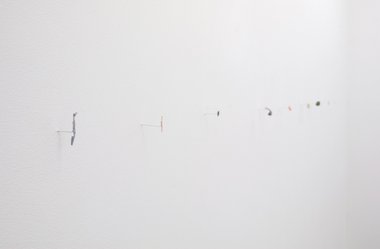
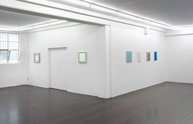

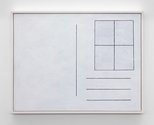
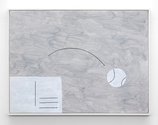





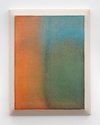

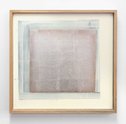



 Two Rooms presents a program of residencies and projects
Two Rooms presents a program of residencies and projects Advertising in this column
Advertising in this column



This Discussion has 5 comments.
Comment
Megan Dunn, 11:53 a.m. 21 December, 2011 #
I saw this show when I was in Auckland and I thought it was pretty good. Like you John, my mind troubled over the curious little Hinkley sculptures, I kept returning to thoughts about Hannah Wilke's chewing gum art - but of course with Wilke it was all a million times more loaded.
Hinkley is getting formal with fimo. Still, I remember the works and the show as a whole was full of origami angles on the kinds of abstraction that seem so in vogue right now.
Loved Austin pushing the envelope out, the play between the figurative and the abstract, the high brow world of painting meets the low brow world of social stationary.
I thought Oliver Perkins paintings were superb - Gretchen Albrecht does rectangles! I particularly enjoyed the stick stapled to the canvas. Perkins actually has some nice tension in his use of materials, the grim grasp of the heavy duty staple, the slender black stick, the white canvas...
John Hurrell, 2:29 p.m. 21 December, 2011 #
With Hinkley it isn't just chewing gum though; could be tiny circuit boards embedded in stringy snot for example.
Eventually with Hinkley one suspects his barely detectable object could disappear to be replaced by spoken or written language alone, if he wished to go in that direction. Dane Mitchell territory, in other words.
John Hurrell, 12:33 p.m. 21 December, 2011 #
Speaking of 'chewing gum art' check out these great photographs of Margi Moore's I saw in Hamilton five years ago.
http://new.artbash.co.nz/forums/reviews/eve-s-rib-tongue-and-teeth
Andrew Paul Wood, 7:50 p.m. 22 December, 2011 #
Oli Perkins is great. With the modest cough of the minor prophet, I put him in an early show of mine back in 2005.
John Hurrell, 8:21 p.m. 22 December, 2011 #
I see he is in the Saatchi Collection. Like Upritchard (or Lye initially, or Hodgkins, or the young Apple) he is living in London and participating in the scene there.
Participate
Register to Participate.
Sign in
Sign in to an existing account.